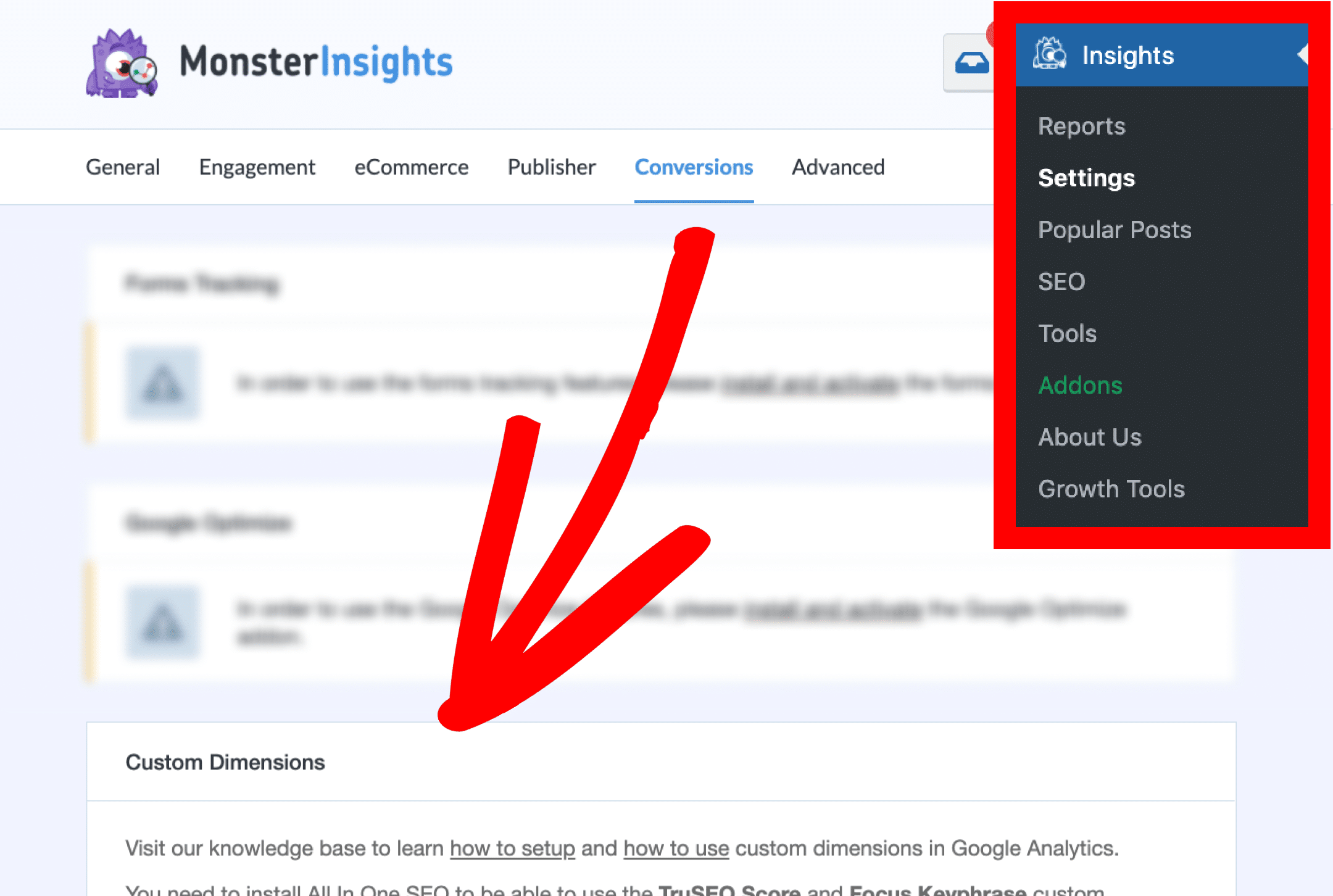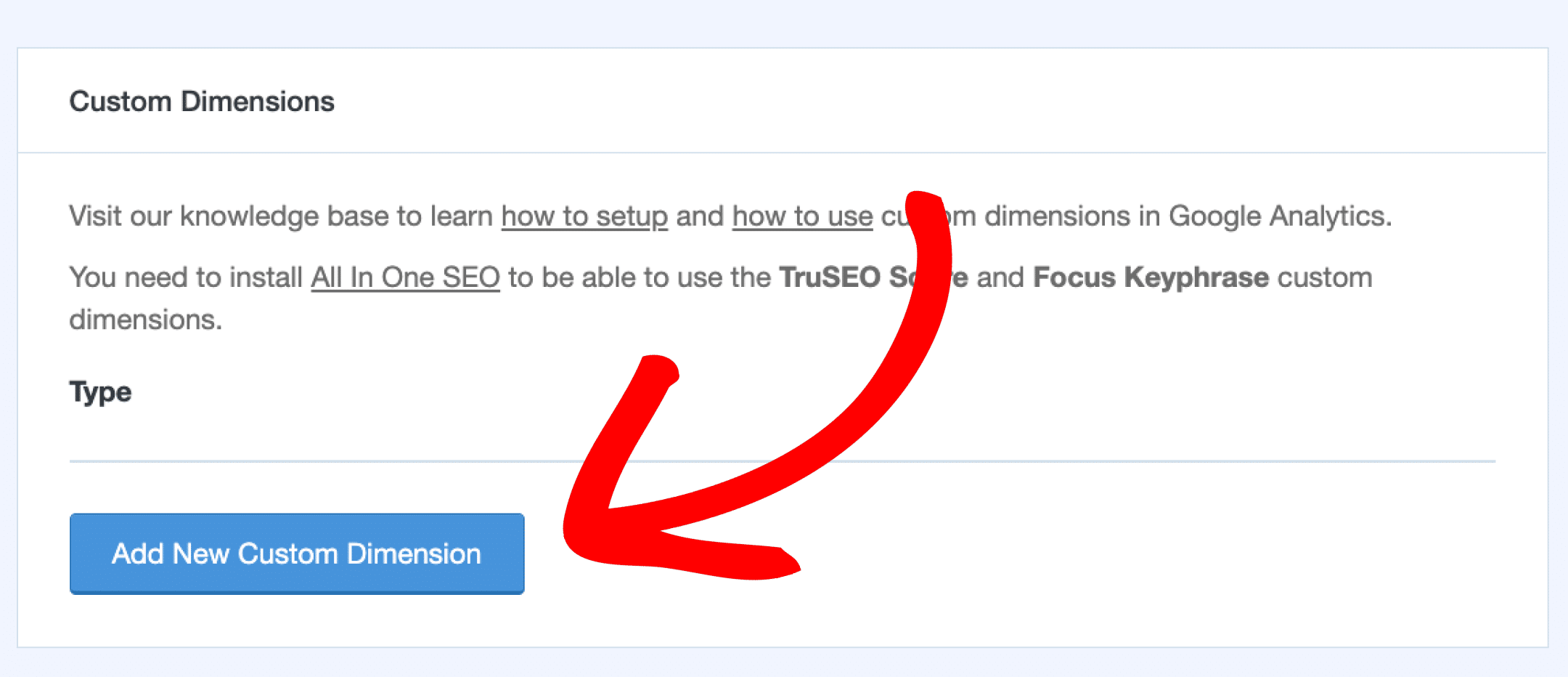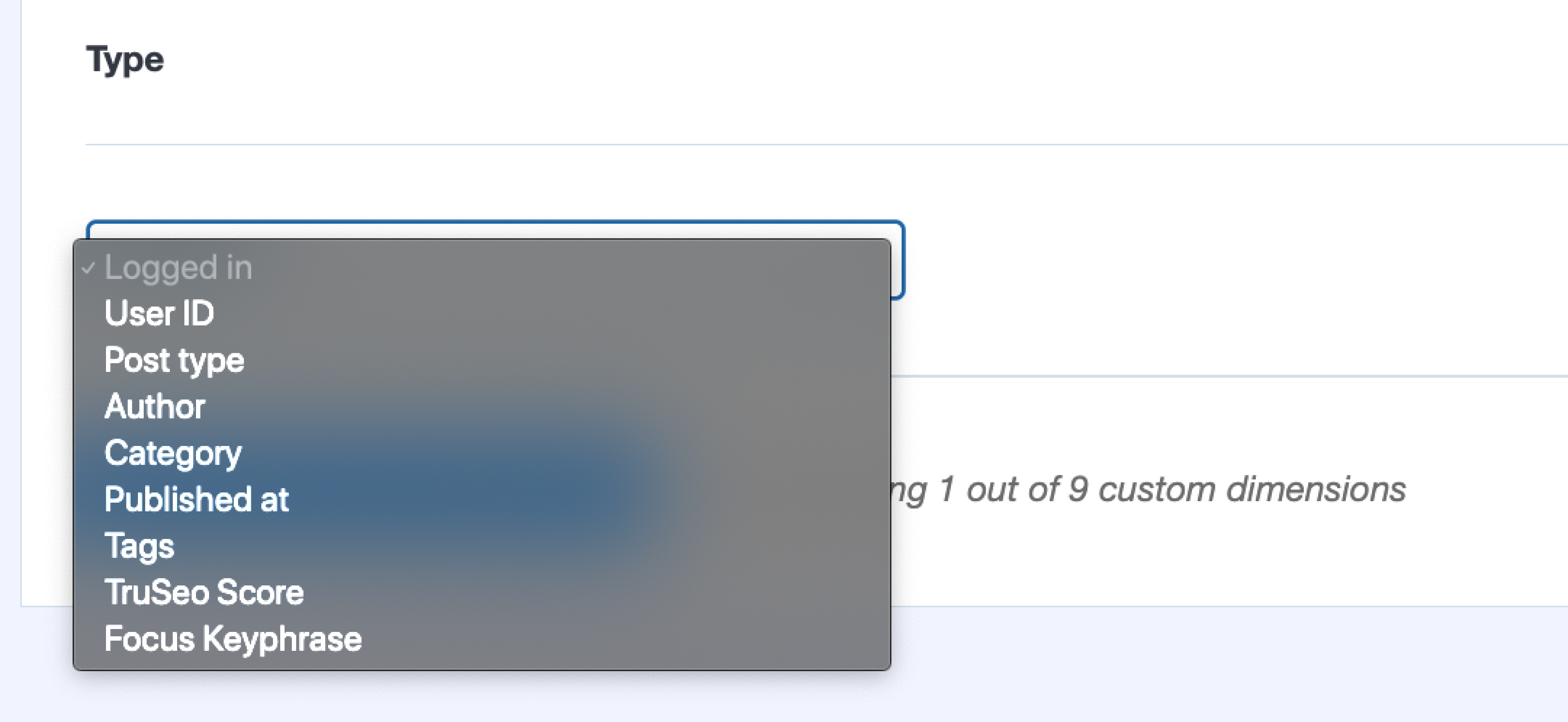With Custom Dimensions, you can choose to track custom data not typically included in vanilla Google Analytics, and display it in your MonsterInsights dashboard and reports. You can track performance for authors, categories, tags, searches, users, and more.
Before getting started…
- MonsterInsights Pro is installed and connected to Google Analytics.
- The Dimensions Addon is installed and activated.
About MonsterInsights Custom Dimensions
MonsterInsights allows you to choose from several custom dimension types. They are:
- Logged in
- User ID
- Post Type
- Author
- Category
- Published at
- Modified at
- Tags
- SEO Score
- Focus Keyword
- Publish day of the week
- Link Type
1. Logged In
This custom dimension allows you to track whether your website visitors are logged in to your site or not.
If you want to choose Logged In as the dimension type, choose Logged In from the dropdown menu.
2. User ID
You can track each individual logged-in user’s activity by setting User ID as a custom dimension. This is ideal for eCommerce and membership sites.
If you want to set User ID as the dimension type, choose User ID from the dropdown menu.
3. Post Type
If you have several custom post types in your WordPress site, you can track the performance of each post type with custom dimensions.
If you want to set Post Type as the dimension type, choose Post Type from the dropdown menu.
4. Author
If you run a multi-author blog, you can identify what works best for each author.
If you want to set Author as the dimension type, choose Author from the dropdown menu.
Note
If the EU Compliance addon is installed and active, Author will not be available as a custom dimension option. The addon automatically disables Author tracking for our customers to avoid issues with GDPR.
5. Category
Tracking the performance of different categories of your site is another great strategy to identify what works best.
To set up category tracking, choose Category from the dropdown menu.
6. Published at
You can track the performance of your posts based on when it was published on your site.
If you want to set Published at as the dimension type, choose Published at from the dropdown menu.
7. Modified at
You can track the performance of your posts based on when it was last modified.
If you want to set Modified at as the dimension type, choose Modified at from the dropdown menu.
8. Tags
Tags give you more detailed insights about what specific topics work best on your site.
To start tracking tags as a custom dimension, choose Tags from the dropdown menu.
9. TruSEO Score
If you’re using the All In One SEO (AIOSEO) plugin for SEO, you can analyze the SEO score of your posts and pages in Google Analytics.
If you want to set TruSEO Score as the dimension type, choose TruSEO Score from the dropdown menu.
If using Rankmath, the available dimension will be Rankmath SEO Score.
If using SEOPress, the available dimension will be SEOPress Score.
10. Focus Keyphrase
If you’re using the All In One SEO (AIOSEO) plugin for SEO, you can analyze the Focus Keyphrase of your posts and pages in Google Analytics.
If you want to set Focus Keyphrase as the dimension type, choose Focus Keyphrase from the dropdown menu.
If using Rankmath, the available dimension will be Rankmath Focus Keyword.
If using SEOPress, the available dimension will be SEOPress Target Keywords.
11. Publish day of the week
You can track the performance of your posts based on the day it was published.
If you want to set Publish day of the week as the dimension type, choose Publish day of the week from the dropdown menu.
12. Link Type
This dimension can provide insights on how your internal links, outbound links, download links, telephone links, or email links are performing.
If you want to set Link Type as the dimension type, choose Link Type from the dropdown menu.
Custom Dimensions in Google Analytics
Now that you know which dimensions you want to set up, let’s move on to the step-by-step guide.
Once you’ve authenticated with MonsterInsights, we automatically create custom definitions for you in your Google Analytics property, so all you’ll need to do is to make adjustments in your MonsterInsights settings.
Go to Insights » Settings » Conversions

Click Add New Custom Dimension to add a dimension.

Choose your dimension from the dropdown.

Click Save Changes.
After you set up your custom dimensions, you’ll begin tracking data for those dimensions moving forward. It can take up to 24-48 hours before seeing data in your reports.
Now you can go to Insights » Reports and click on the Dimensions tab to view your new custom dimension reports.

That’s it! If you enjoy having more and more data, you should definitely check out our Google Analytics eCommerce Tracking plugin. This will make it very easy for you to track your sales from your site!

